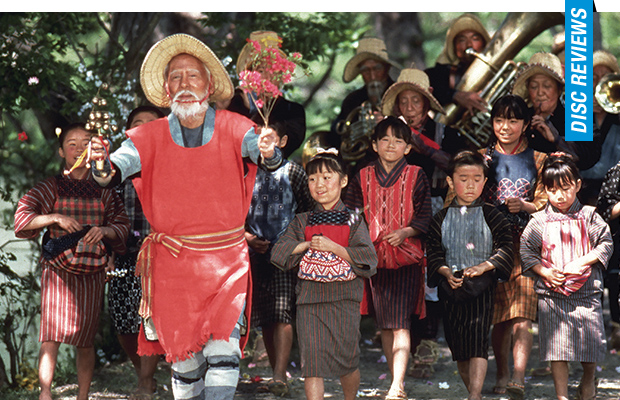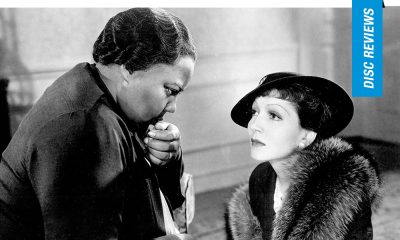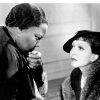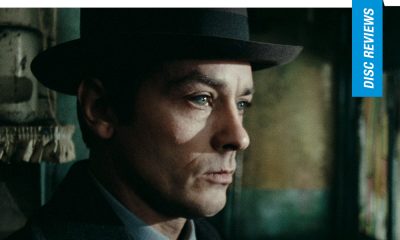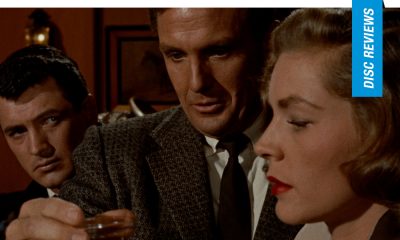Disc Reviews
Criterion Collection: Akira Kurosawa’s Dreams | Blu-ray Review
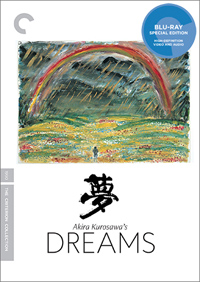 Arguably the most revered and influential filmmaker to come out of the Japanese New Wave, Akira Kurosawa’s vast filmography spanned six decades, beginning with his 1943 feature Sanshiro Sugata and ending with 1993’s Maadadayo shortly before his death in 1998 at the age of 88. However, after his prolific period of the 1950s and 60s, Kurosawa worked infrequently, managing about two films a decade, and often seemed interested in moving off into ambitious new directions, such as his 1975 film Dersun Uzala, the first Russian-Japanese co-production. After his late masterpiece, Ran (1985), a reconfiguration of Shakespeare’s King Lear, Kurosawa developed one of his most experimental projects, which would come to be known as Akira Kurosawa’s Dreams, a film made of eight vignettes based on the auteur’s own nighttime flights of fancy. Ranging from moments of magical realism to pronouncedly unnerving visualizations of radioactive fallout, this series of reflections is also perhaps one of the Japanese master’s most pronouncedly avant-garde, a collection of accents unveiled as logically as stream of consciousness permits.
Arguably the most revered and influential filmmaker to come out of the Japanese New Wave, Akira Kurosawa’s vast filmography spanned six decades, beginning with his 1943 feature Sanshiro Sugata and ending with 1993’s Maadadayo shortly before his death in 1998 at the age of 88. However, after his prolific period of the 1950s and 60s, Kurosawa worked infrequently, managing about two films a decade, and often seemed interested in moving off into ambitious new directions, such as his 1975 film Dersun Uzala, the first Russian-Japanese co-production. After his late masterpiece, Ran (1985), a reconfiguration of Shakespeare’s King Lear, Kurosawa developed one of his most experimental projects, which would come to be known as Akira Kurosawa’s Dreams, a film made of eight vignettes based on the auteur’s own nighttime flights of fancy. Ranging from moments of magical realism to pronouncedly unnerving visualizations of radioactive fallout, this series of reflections is also perhaps one of the Japanese master’s most pronouncedly avant-garde, a collection of accents unveiled as logically as stream of consciousness permits.
Loosely depicting man in relation to his environment in each sequence, Kurosawa begins with “Sunshine in the Rain,” where a young boy is told not to wander into the woods during inclement weather because it is when the foxes of the forest hold their wedding procession and it is forbidden for humans to see the event. Disobeying the mother’s orders, the young boy witnesses the fox wedding and is immediately barred from his home, told to ask forgiveness from these woodland creatures and commit seppuku to restore dignity to the family. In the next segment, “The Peach Orchard,” the same young boy converses with the spirits of the peach trees left behind after they’ve been chopped down by callous humans.
Spiritual intervention graces the men in the next two segments, including “The Blizzard,” where a group of mountaineers are saved from death, and “The Tunnel,” where a soldier encounters a legion of ghosts from a deceased platoon. In “Crows,” an art student in the French countryside encounters Vincent Van Gogh (Martin Scorsese) after the famed painter was recently released from a sanitarium, while a nuclear meltdown threatens the population in “Mt. Fuji in Red.” Next, in “The Weeping Demon,” a man converses with a half-human creature bemoaning the state of the post-nuclear world, while lastly in “Village of the Windmills,” a young tourist visits a town without electricity and meets with a centenarian living there who spouts wisdom on living in a world where man coexists with nature rather than destroying it.
Notably, this is the first film written completely by Kurosawa since his 1945 title The Men Who Tread on the Tiger’s Tail. Famously featuring Martin Scorsese in a rather loopy rendering of Vincent Van Gogh, who speaks English to the French speaking supporting characters in his segment, Dreams also benefitted from the intervention of Steven Spielberg, who assisted Kurosawa in achieving funding after he experienced difficulty securing financing in Japan due to his politically minded critique of nuclear power.
The film premiered out of competition at the 1990 Cannes Film Festival, and picked up a Golden Globe nomination stateside for Best Foreign Language Film. Not unlike the effects of an omnibus feature, Kurosawa’s motif based film features several segments which are stronger than the others, including the opening “Sunshine in the Rain,” which plays like a morbid fairy tale. Others, like “The Tunnel” and “The Blizzard” tend to feel a bit schmaltzy, despite some pronouncedly unique visualizations of ghostly apparitions, while the closing segment, “Village of the Windmills,” also tends to feel overly sentimental. But in moments like “Mt. Fuji in Red,” where Japanese citizens balk at multicolored plumes of smoke meant to be radioactive fumes spewed from a nuclear power plant, Dreams manages striking moments of relevance in this nightmare approximation.
Disc Review:
Criterion grants this late period Kurosawa a new 4K digital transfer, presented in its original aspect ratio of 1.85:1. DP Shoji Ueda supervised the transfer, and the film is, if anything, a testament to Ueda’s (and fellow DP Takao Saito) talents, for the visualizations of Dreams, particularly its more fantastic segments (“The Peach Orchard” and “The Weeping Demon” are definite standouts). Criterion includes a plethora of new interviews with the film’s technicians, including production manager Teruyo Nogami and assistant director Takashi Koizumi.
Making of Dreams:
Criterion includes this near three hour documentary on the making of Dreams made by director Nobuhiko Obayashi (House) from the set of the film, which includes behind-the-scenes footage as well as interviews with cast and drew.
Kurosawa’s Way:
Catherine Cadou, Kurosawa’s longtime translator, made this fifty-two minute documentary, which was released in 2011. She interviews eleven major auteurs whose works have been influenced by Kurosawa, including Bernardo Bertolucci, Clint Eastwood, Abbas Kiarostami, Hayao Miyazaki, Theo Angelopoulos, Alejandro G. Inarritu, Shinya Tsukamoto, Bong Joon-Ho, Julie Taymor, John Woo, and Martin Scorsese (who, of course, speaks on his role as Vincent van Gogh in Dreams).
Teruyo Nogami:
Teruyo Nogami collaborated with Kurosawa as his script supervisor for more than forty years. Criterion interviewed her in July, 2016 for this seventeen minute segment and she recalls her working relationship with the director as well as the difficult process of bringing Akira Kurosawa’s Dreams to life.
Takashi Koizumi:
Takashi Koizumi worked alongside Kurosawa as AD on his last five features. Criterion conducted this sixteen minute interview in July, 2016. Koizumi recalls meeting the director in 1970 and the intensive process of working on Dreams, which went into gear after Kurosawa attended the Oscars in 1986.
Final Thoughts:
Ultimately, Dreams is a sometimes magical, sometimes mawkish but visually extravagant effort from Akira Kurosawa, which also unfortunately feels like an experience simply designed for humoring the auteur.
Film Review: ★★★/☆☆☆☆☆
Disc Review: ★★★★/☆☆☆☆☆



